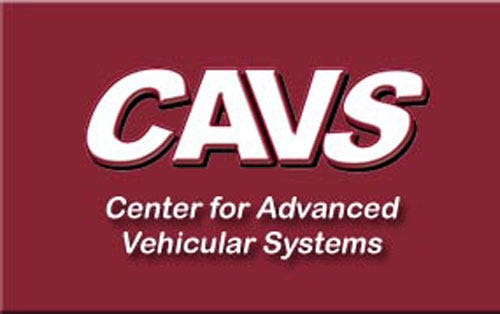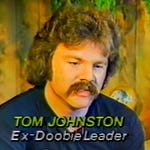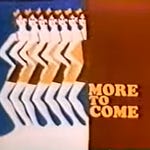
Up until ESPN took over, the NBA’s lottery took place on a weekend.
Up until 2002, when the Rockets won the right to draft Yao Ming midway through a Boston Celtics/New Jersey Nets Eastern finals tilt, the drawing was shoved within the sort of space that suited it — 15 minutes of draft gab in between actual basketball.
Honest-to-greatness NBA playoff games saw their halftime spaces interrupted by the sad state of seven-to-14 sacks of sometimes-smiling team representatives sucking up the seats in Secaucus. It was a woeful misuse of available intrigue, something Disney got right to changing once it became time for ABC/ESPN to inherit LeBron James in 2003.
The Cavaliers won that one. They’ve won a lot of these — four lottery victories in 2003, 2011, 2013 and 2014 alongside the time they were able to finagle the top pick out of Philadelphia back in 1986.
The NBA really likes giving Cleveland the best chance it can.
The Sixers won the top overall pick in 1986, the 67-win Boston Celtics won the second pick.
This was the second lottery.
The Knicks vaulted up to grab the top spot in 1985, awarding the league’s largest city with can’t-miss center Patrick Ewing. The league’s lottery process then handed the top two spots in the 1986 draft to a pair of clubs that had traded off Eastern Conference championship titles for six seasons running — a marathon that would roll past 1986 and 1987 as Larry Bird’s Celtics continued apace.
Even with its own aging core Philly seemed straight in line to pick up where Bird’s Celtics left off. PHILA was flush for the rest of the 1980s after the 52-win Sixers plucked Charles Barkley out of the 1984 draft (due to a six-year old transaction with the Clippers).
Second Year Sir Charles turned a 20-point, 12.8-rebound, 3.9-assist second season for the 58-win 76ers in 1985-86 — the Sixers had the second half of an NBA basketball game scheduled right after they won the top pick in the NBA draft.
Watch the second half above, an Eastern Conference semifinal Game 7, or the entire contest right here. Barely any talk of a damn lottery.
Compare that to whatever happens Tuesday — when any number of NBA skidmarks could vault toward the right to introduce themselves to Zion Williamson — and whatever chatter pops up as ESPN sets to broadcasting a Golden State Warriors/Portland Trail Blazers contest.
Hell, look at what the Washington Post’s Mike Wilbon wrote in the aftermath of 1986’s event, as it corresponds with whatever Wilbon will shout about on TV Wednesday afternoon:
None of the six other club officials here complained about their draft order today, because there does not appear to be any one potentially dominant player who stands out from the rest, as Patrick Ewing did last year. There does not appear to be any great disparity between the top seven to 10 players in the draft pool.
Wilbon quoted 76ers general manager Pat Williams:
“It doesn't seem quite fair that the clubs with records this good are picking No. 1 and No. 2. But the league powers had a chance to study this method two years ago, and they made their decision.
We both got these picks with off-the-wall trades. . . . This is the last thing in the world the league powers would have orchestrated.”
Wilbon outlined the route Williams took to secure Philadelphia’s strain of luck:
This was the culmination of a deal struck back in 1979. Today, Williams remembered driving back from a preseason game at Capital Centre in October 1979 and getting so itchy to make a deal with the San Diego Clippers that he pulled into a gas station in New Jersey, found a pay phone to call the West Coast and made sure the deal was still on.
San Diego owner Irv Levin reportedly wanted to give up his first-round draft choice in the year 2010; Williams wanted something a little sooner, like 1983. They settled on 1986, and today that pick -- obtained straight up for Joe (Jellybean) Bryant -- became the No. 1 pick in this year's draft.
Williams' biggest worry was that the Clippers would fold before he could get his draft choices.
(In 2010, with its own pick, the Los Angeles Clippers selected Al-Farouq Aminu. Man all this shit is tied together.)
The Post wasn’t the only one to fawn over the trades, and rightfully so.
Pat Williams finagled 1984’s Charles Barkley selection out of the San Diego Clippers six years earlier, in a deal sending scorer World B. Free to the moribund franchise.
Sports Illustrated detailed the old deals before adding this kicker:
Oh, yes, [Jellybean] Bryant is out of the NBA, and Free, while still an able performer with Cleveland, won't be missed next season by the Barkley-led (and Daugherty-strengthened?) Sixers.
Reminded of the existence of a professional basketball club in Cleveland, Williams got to work.
He wasn’t long for the Sixer job, after publicly committing to taking the reins of Orlando’s expansion franchise as soon as 1985-86 wrapped up. Following the Bucks’ dismissal of Philadelphia in Game 7, Williams had one bit of business left to settle with the Sixer team he’d run for a dozen years.
The Cavs initiated the business after Williams declined to commit to a single player after winning the 1986 lottery. Twenty-five years later, former team owner Gordon Gund outlined the machinations:
“Thanks to Dick Watson, our cap guru, we figured out that Philadelphia was going to have a very hard time signing the first pick overall.
“So I talked with [Philadelphia owner] Harold Katz about a trade. We negotiated for the first-round pick and were very fortunate to get the first pick the night before the draft. I made the decision, but Dick was the one who identified that they would need to do something.”
Williams dealt the top overall pick in the 1986 draft for 25-year old Cavs forward Roy Hinson, a Rutgers product who averaged 19.6 points and 7.8 rebounds in 1985-86. Cleveland also sent $800,000 — “a significant amount of cash,” Williams noted in 2016 — to the capped-out 76ers.
Philly wasn’t done. Williams may have already agreed to run a new team, but he was set on delivering his Sixers a winner through the end of the decade.
“I was totally locked in to leave Philadelphia on a high note, and we had everybody involved. Our coach was Matt Guokas, assistant Jim Lynam, assistant GM John Nash, the veteran scout Jack McMahon, and a very much involved owner, Harold Katz.
“We were all gathered for many, many days talking and analyzing and seeing exactly what we could do. So there was no lack of focus. Everybody wanted to do the very best that we could to make it a productive draft day.”
On draft night the Sixers dealt 31-year old star center Moses Malone to the Washington Bullets for 27-year old Jeff Ruland (a two-time All-Star with Bullet averages of 19 points and 11 rebounds per game and 60 games per season), and the other Cliff Robinson (a 25-year old small forward who averaged 18.7 points in 1985-86).
The Sixers also sent two first-round picks (set to be Anthony Jones, and Harvey Grant) to Washington, in exchange for someone taking Moses Malone’s three remaining All-Star trips off Philadelphia’s hands.
Williams explained the thinking in 2016:
“Charles was a low-post player, by and large, and we thought that he and Moses would kind of contradict each other, so it would probably be wise to open things up and let Charles have full sway. Ruland was more of a high-post center, a passing center, so we felt that was going to be a good combination for us.”
It should have been. The pieces all fit on paper, the same material Jeff Ruland’s arches were made out of.
The 76ers would remain a playoff team for the rest of the decade on the back of Barkley, and hardly the youthful trio of established NBA contributors Williams brought to Philadelphia in exchange for, uh, the top overall pick in an NBA draft, Moses Malone, and two other first-round picks.
(Also Terry Catledge, the Sixer forward Williams would later use with his third selection for the Orlando Magic in 1989’s NBA expansion draft.)
Cleveland’s desperation to secure Daugherty was understandable, even Williams admitted after the lottery there existed “no down side to Daugherty. He's the surest pick.”
The Cavaliers cleaned house after 1985-86, firing coach George Karl and GM Harry Weltman, the team technically worked without a general manager during the 1986 draft. Indiana Pacers executive Wayne Embry agreed to terms with the Cavaliers to become Cleveland’s next general manager beginning in the offseason, but Embry had to finish his 1985-86 work with the Pacers (holders of the No. 4 pick) first.
Embry was permitted by both sides to influence Cleveland’s decision-making from afar, he encouraged Gund to follow through on the deal for the top overall pick and eventually for the Cavs to choose Daugherty ahead of Maryland star Len Bias.
With its own first-round selection at No. 8, the Cavaliers chose Dayton native Ron Harper, a Michael Jordan-clone who averaged 22.9 points and started 82 times in his rookie season. That Cleveland even had first-round selections was nutty enough.
In an 11-month stretch from 1980 through 1981, the Cleveland Cavaliers traded away three future first-round picks to the Dallas Mavericks, in three separate transactions.
They kept going back to the well:
The 1986 selection went to Dallas along with the 1983 first-rounder and the late Bill Robinzine for Richard Washington and Jerome Whitehead on Oct. 30, 1980.
On Feb. 7, 1981, Cleveland then traded its 1985 first-round pick to Dallas as part of a trade for Geoff Huston. Later that year, on Sept. 16, the Mavericks got the 1984 selection for Mike Bratz.
All to Dallas! The Mavericks picked up Sam Perkins, Detlef Schrempf, Roy Tarpley, Derek Harper out of these deals, and the NBA created a clause named after Cleveland owner Ted Stepien, preventing teams from dealing first-round picks for consecutive years.
Prior to his workings with Dallas, Stepien was best known for acquiring a fella by the name of “Don Ford” in exchange for what would become (after Cleveland lost 67 games in 1981-82) the top overall pick in the 1982 draft, James Worthy.
The NBA stepped in soon after, asking Stepien and coach Bill Musselman to stop making so many trades. Ted sold the team to Gund in 1983.

There remained the matter of the Cavaliers’ suck.
“Trading away top picks means not being able to build with youth,” Gund explained in 1986. Well, yeah.
“We felt it was necessary to get the '83, '84, '85 and '86 draft picks back.”
Oh, I didn’t know you could do that.
When he purchased the Cavaliers in the spring of 1983, Gund insisted that establishing “credibility with the fans” would stand as “an impossible task” without getting some picks back. Though several cities were open to NBA expansion, the league wanted its club in Northeast Ohio.
The NBA let the Cavs buy four future first-round picks for $500,000.
As explained on the date of the sale:
1983 -- As before the sale, the Cavs draft either 19th or 20th overall, depending on a coin toss between San Antonio and Phoenix. However, they also receive a bonus pick, number 24 overall, at the end of the first round.
1984 -- The Cavs will pick immediately after where they would have selected, but not better than 12th overall.
1985 -- The team picks immediately after where it would have selected, but not better than any team not making the playoffs.
1986 -- The team picks immediately after where it would have selected.
Not only were the Cleveland Cavaliers allowed to buy four draft picks for less than what World B. Free made that season, each selection got to edge The Next Team down a spot.
The Cavs sucked in 1984 and picked as highly as the NBA’s agreement allowed — using the No. 12 pick to select Tim McCormick to pair with Cliff Robinson (same guy) in a deal to move up to No. 6 (and the right to be wrong about Mel Turpin).
The 1985 selection (Charles Oakley, No. 9) was also shipped out on draft night — the second consecutive year Cleveland traded its first-round pick — in exchange for No. 11 pick Keith Lee and 1983’s No. 13 selection, Ennis Whatley.
Cleveland was able to take Roy Hinson with the pick it bought in 1983.
Roy, plus $125,000, earned the Cavaliers the top overall pick in the 1986 NBA draft.
Daugherty didn’t even win Rookie of the Year. Indiana Pacer rookie Chuck Person — selected in part by Pacers/Cavaliers executive Wayne Embry — took that one home.
This stuff belongs on a Sunday.
MEET ME IN THE BOTTOM
Now you know why I like small amplifiers.
Thank you for reading! Subscribers get this sorta stuff all summer, not sure if you heard but the nights are getting warmer now, it won’t be long:
(More to come.)














Share this post